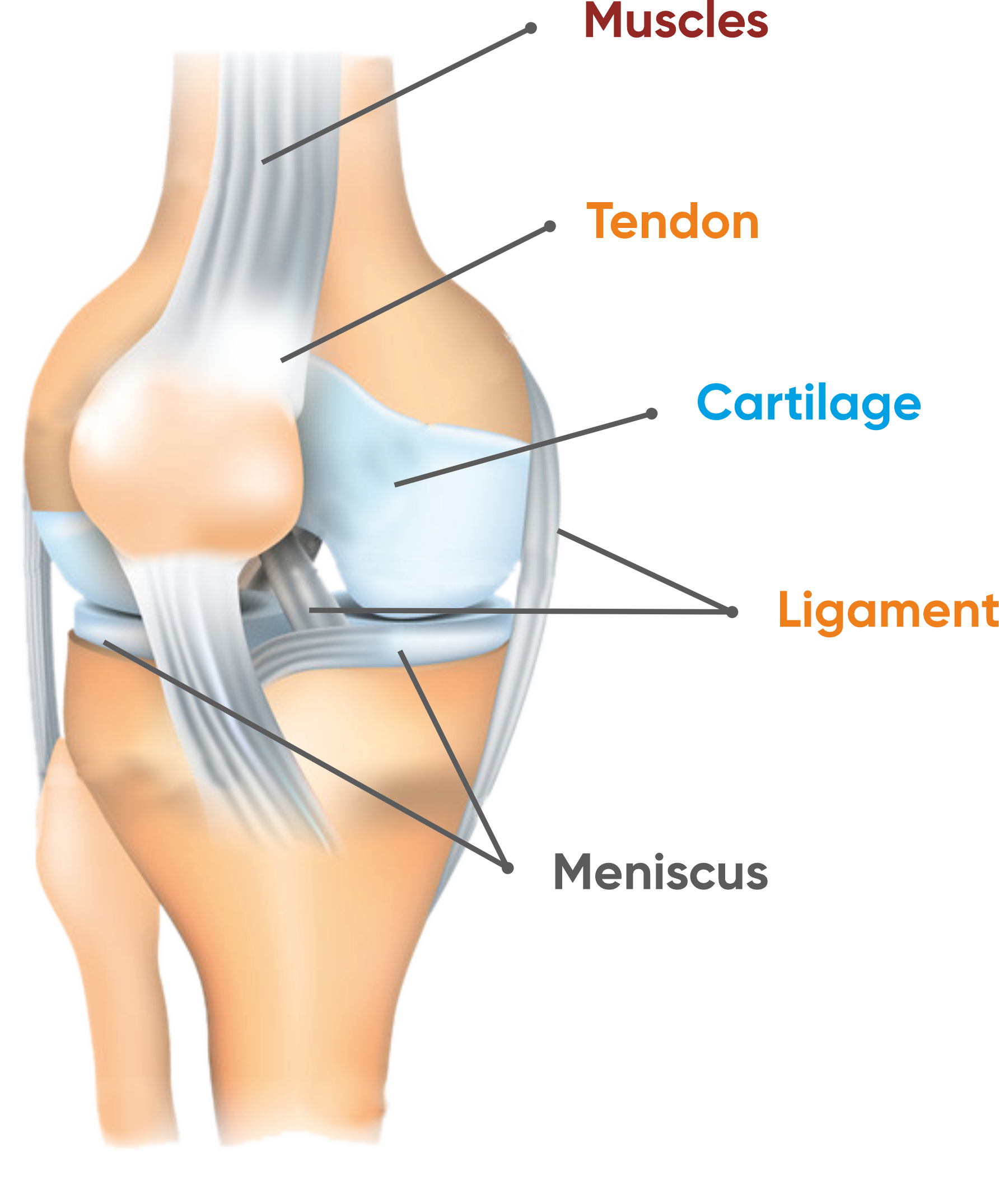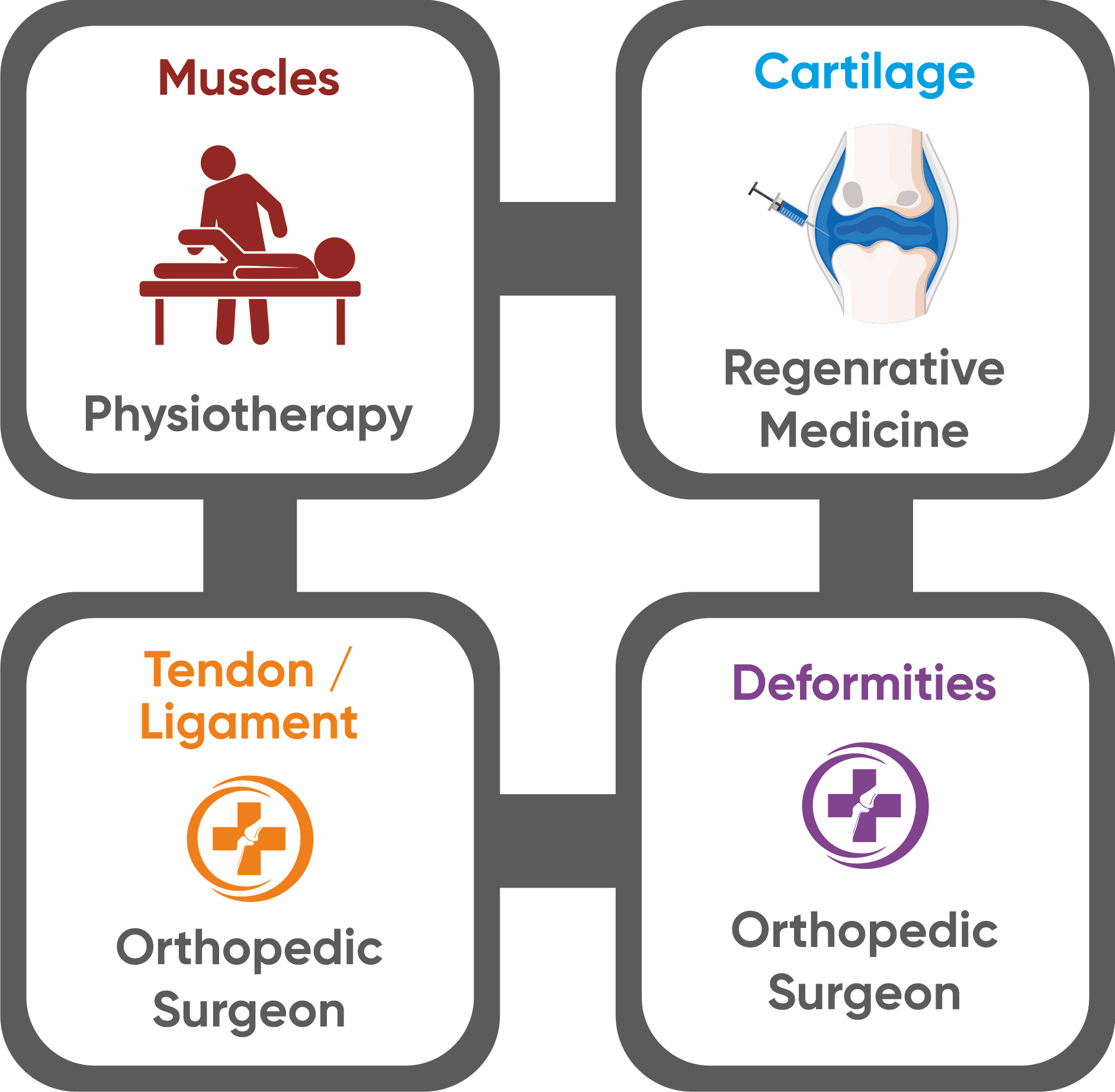Knee Anatomy
The knee joint has three parts. The thigh bone (the femur) meets the
large shin bone (the tibia) to form the main
knee joint. This joint has an inner (medial) and an outer (lateral)
compartment. The kneecap (the patella) joins the
femur to form a third joint, called the patellofemoral joint. The
patella protects the front of the knee joint. Other
than that tendon, ligament and muscles plays a vital role in functioning
of knee joint.
Articular cartilage coats the ends of the bones in
the knee joint to provide a smooth gliding surface so the bones in the
joint move fluidly against each other and the “The crescent-shaped pad
of cartilage called the meniscus functions as a joint stabilizer and
provides a cushion between the weight-bearing bone surfaces in the knee.


4 Major Reasons of Knee Pain
Week Knee / Leg Muscles
After the age of 40 years it is found in diferent research work that every 10 years there is around 8 to 10 % muscle loss. Due to week muscles the body weight get directly transferred to the knee bones which becomes the reason of knee pain. Symptoms often include pain, swelling, and diculty in walking.
Tendon/ Ligament Injury or sprain
Inflammation of the tendons/ ligament may result from overuse or due to injury in them that can be treated by Orthopaedic surgeon or by physiotherapist.
Torn or damaged Cartilage
Cartilage damage is the reason of knee pain in more than 80% case which enhances with the age and ignorance of same may leads to complicated surgeries in near future. If it is not ignored and treated in time, not only the progression disease can be stopped even it can be reversed.
Deformities in Knee Joint / Legs
Leg deformities are musculoskeletal abnormalities that can be congenital (something you are born with), developmental, or acquired as the result of fracture, infection, arthritis or tumor. Becomes the reason of joint pain due to early to damage of cartilage.